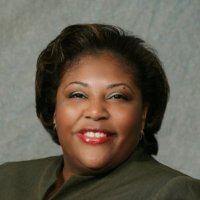By Tisa Jackson
Vice President of Diversity and Inclusion, Union Bank, N.A
The problem with communication…is the illusion that it has taken place,” George Bernard Shaw once said. Making sure communication does take place is particularly challenging for diversity leaders because misconceptions, ambiguities, myths and simple misunderstandings often complicate the process of implementing diversity initiatives.
As you develop a communications strategy targeting various audiences, keep in mind that this is no place for shortcuts, and a onesize-fits-all approach generally will not work. The people you want to reach represent not only many different cultures and backgrounds, but are also at different places along the continuum of awareness and understanding. for these reasons, it is especially important to know your audience. You have multiple stakeholders, internally and externally, and your message should be tailored to fit each group.
Following are some other key points to keep in mind as you develop your diversity and inclusion communications program:
Start at the beginning. Step one in any communications strategy is making sure you clearly define what diversity means to your organization. If you don’t define it, people will define it for themselves, and it will be more difficult to establish the common vision that is important to achieving your goals.
Defining diversity and clarifying your vision and objectives are part of the often-neglected process of developing a framework or context for your diversity and inclusion efforts. Allow ample time for this process. At Union Bank, we spent the time to deliberate and refine our definition of diversity, which reads: “Diversity at Union Bank is an appreciation and respect for all of the ways that people are both similar and different.”
The executives on the bank’s Diversity council closely examined every word before sending this definition to another council headed by our president and chief executive officer for approval. There was a great deal of discussion about respecting similarities as well as differences. We decided to include this point, because similarities provide common ground that makes it easier to appreciate differences and empathize with others.
Choose the right messenger. Top executives should certainly be among those who deliver your messages, but sometimes a middle manager or employee leader may have an even greater impact.
Keep it simple. Information overload is rampant today, so communicate in stages. Start by talking about your definition of diversity. next, focus on your vision, and then your objectives. provide bite-sized chunks of information. This allows for dialogue at each stage in your communication process, which leads to greater understanding and encourages everyone to get involved.
Always include a call to action. It may be as simple as asking people to reexamine their own ideas in light of your company’s definition of diversity. Your call to action will be different for each audience. Ultimately, you want all executives and employees to understand how they can contribute to the success of the company’s diversity and inclusion initiatives.
Your communications plan should also make strategic use of nonverbal messages. This is particularly effective in building credibility in your community. for example, you can make a powerful statement about your firm’s commitment to diversity by consistently filling your tables at community events with a multicultural contingent of company leaders. Also, ensuring a wide range of diverse employees at all levels – from entry level to executive management – helps to reinforce true commitment to diversity and inclusion.
Effective communication can make or break a company, a product, or a diversity initiative. As a diversity leader, you are well-qualified to develop and execute a strategy that demonstrates understanding of your diverse audiences.

Tisa Jackson
Tisa Jackson, vice president of diversity and inclusion for Union Bank, N.A., has more than 13 years of experience in this field, as well as strategic human resources management, community development and organizational development. She is founder of the Professional & Technical Diversity Network (PTDN) of Greater Los Angeles, a diversity consortium comprised of companies committed to diversity and inclusion. Union Bank, N.A., is a full-service commercial bank providing an array of financial services to individuals, small businesses, middle-market companies, and major corporations. As of May 10, 2010, the bank had 397 banking offices in California, Oregon, Washington and Texas and two international offices. UnionBanCal Corporation is a wholly-owned subsidiary of The Bank of Tokyo-Mitsubishi UFJ, Ltd., which is a subsidiary of Mitsubishi UFJ Financial Group, Inc. Union Bank is a proud member of the Mitsubishi UFJ Financial Group (MUFG, NYSE:MTU), one of the world’s largest financial organizations. Visit www.unionbank.com for more information.






